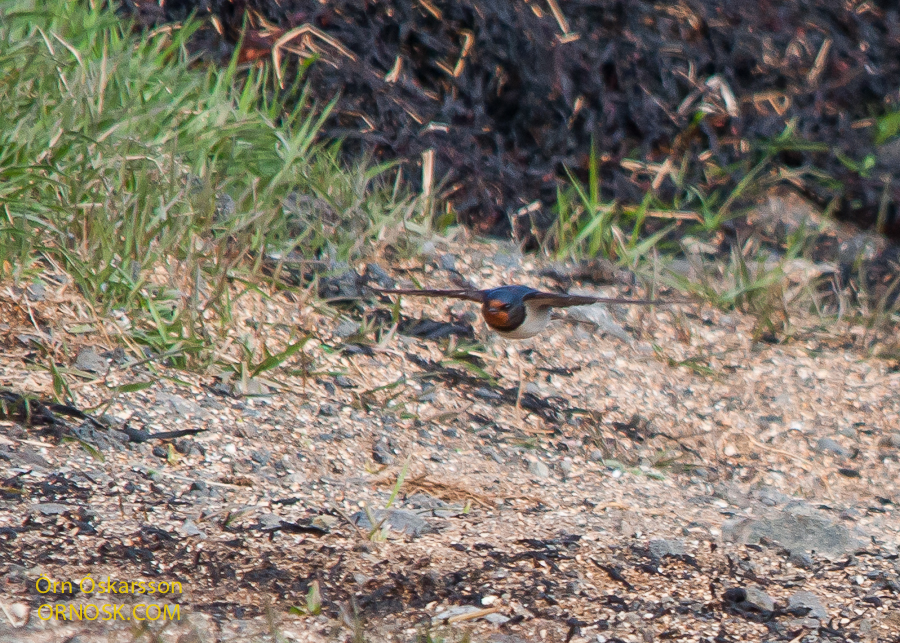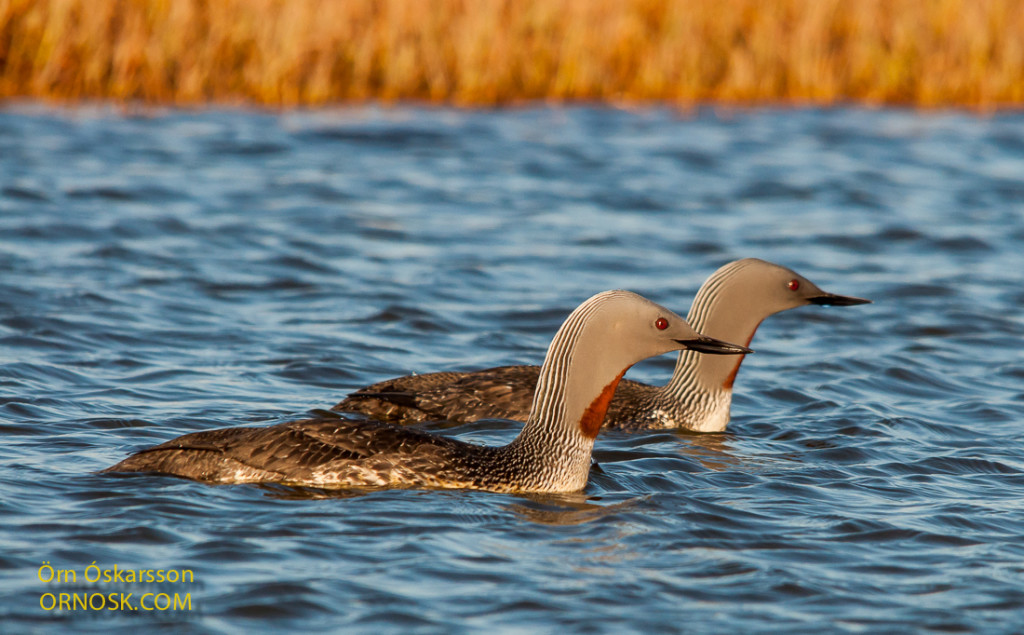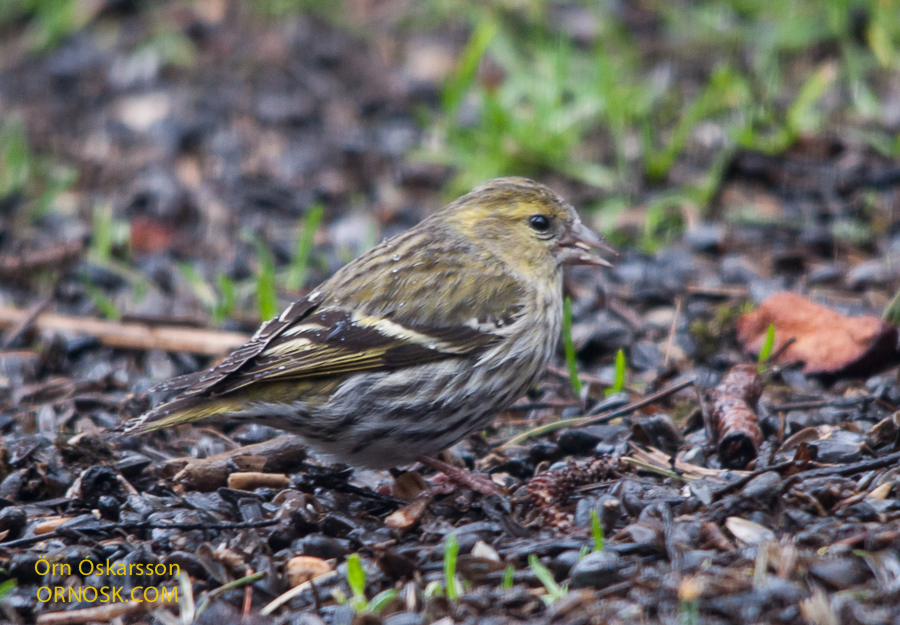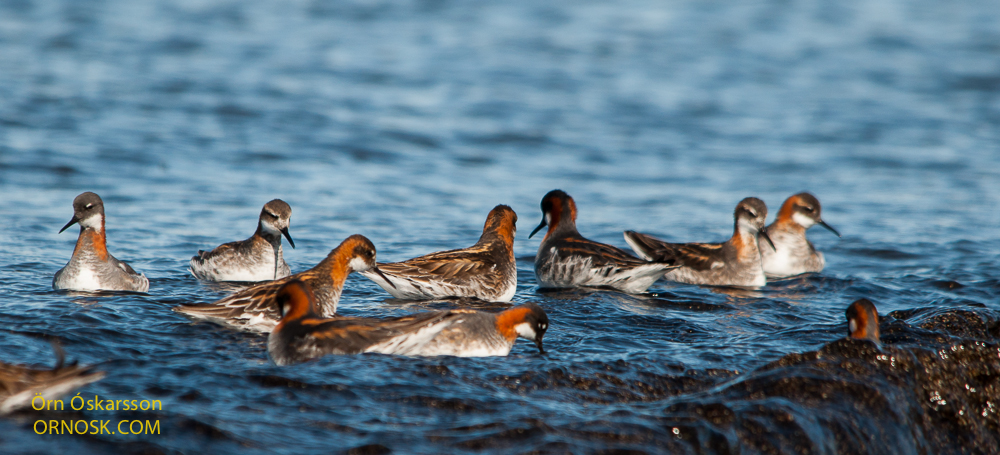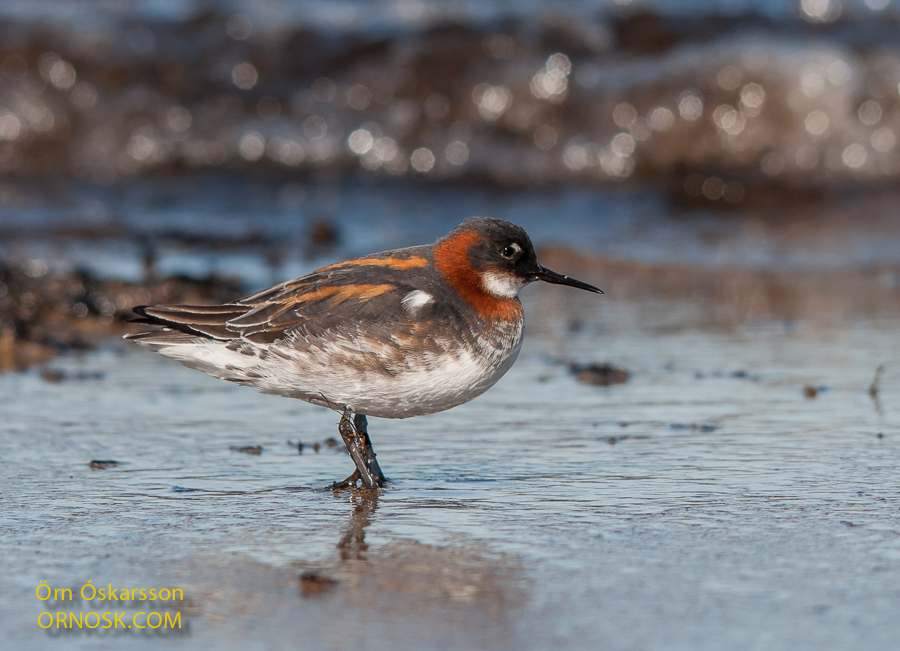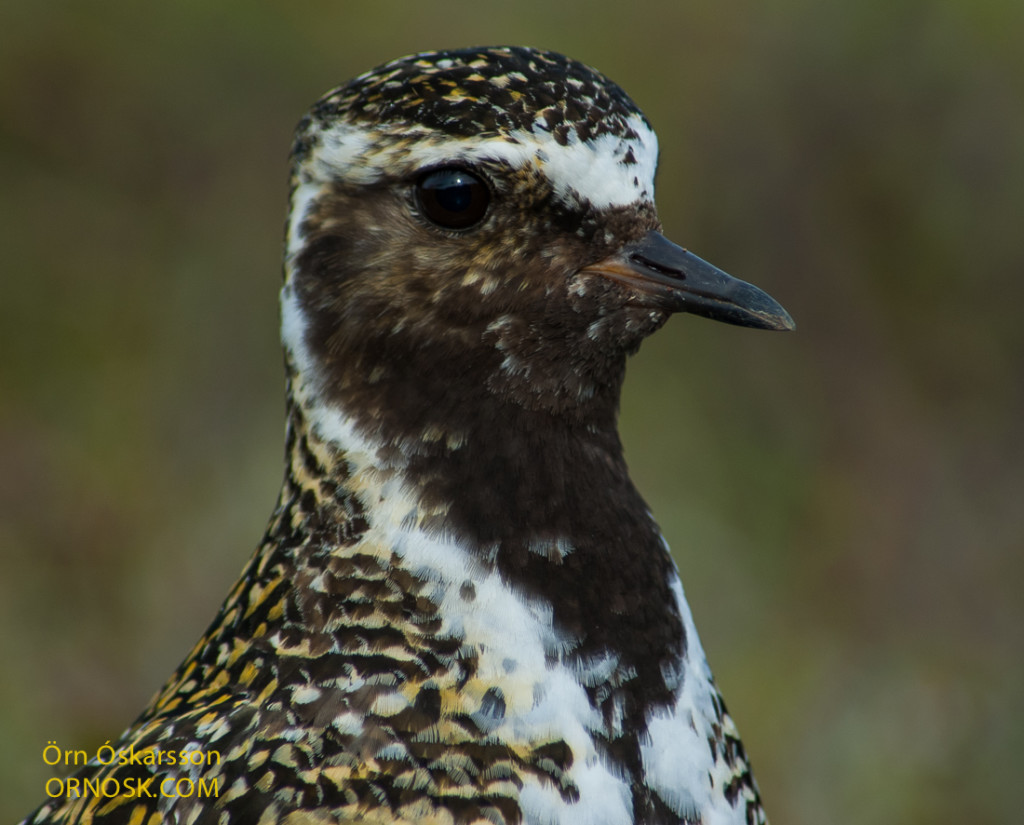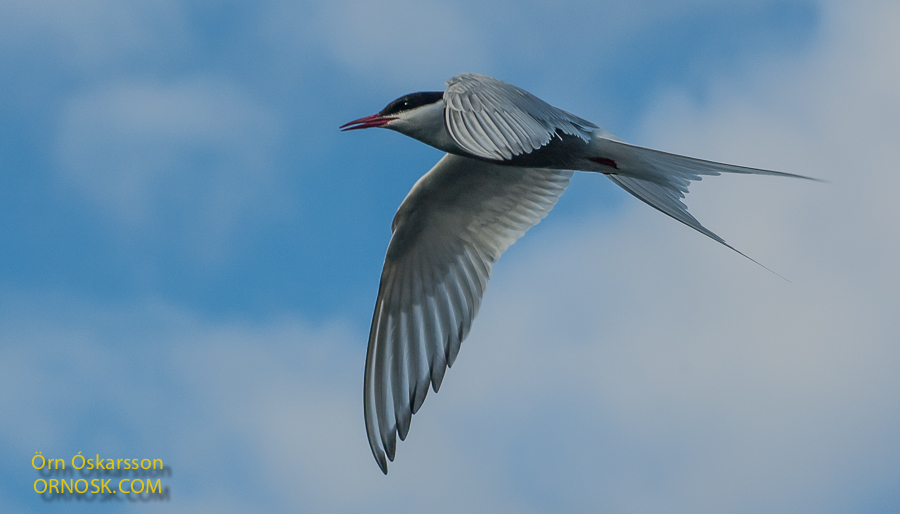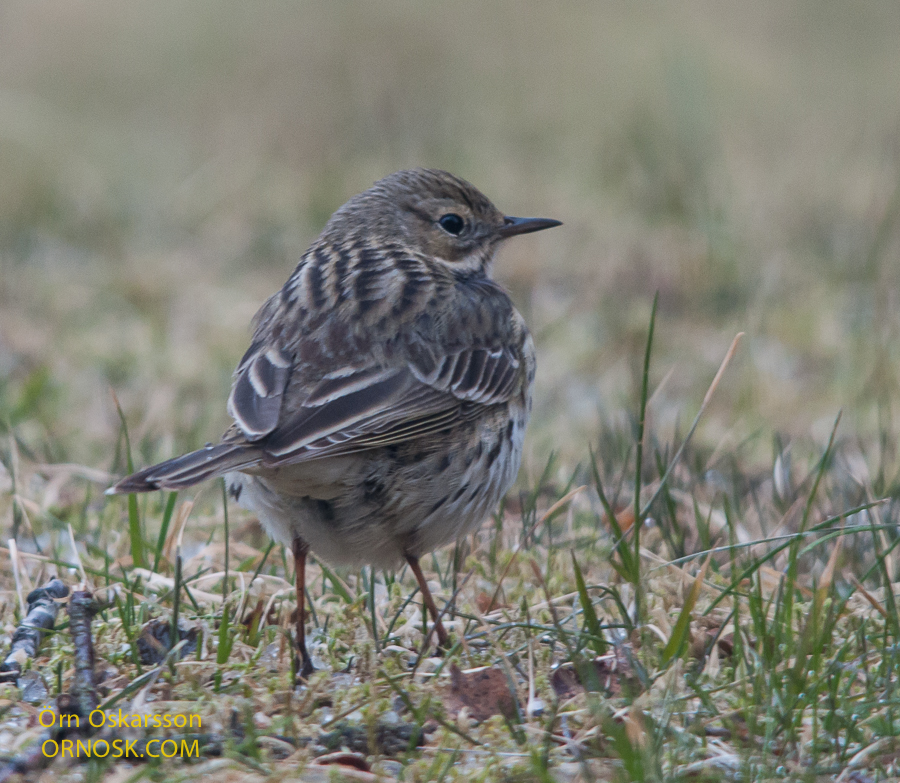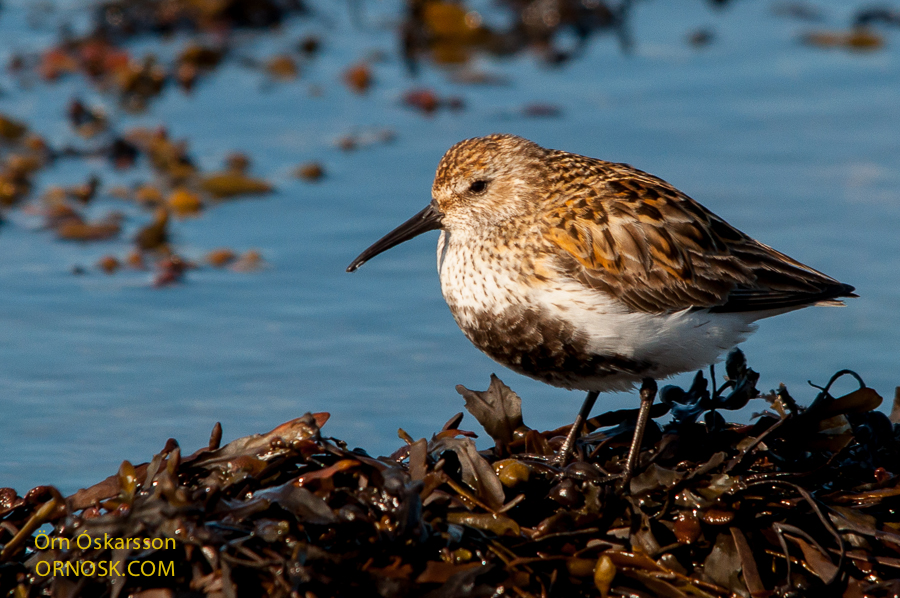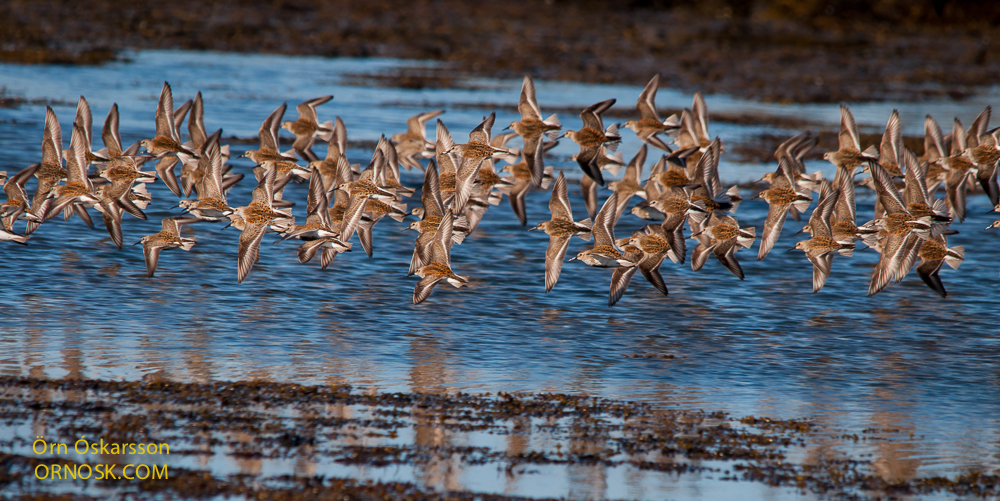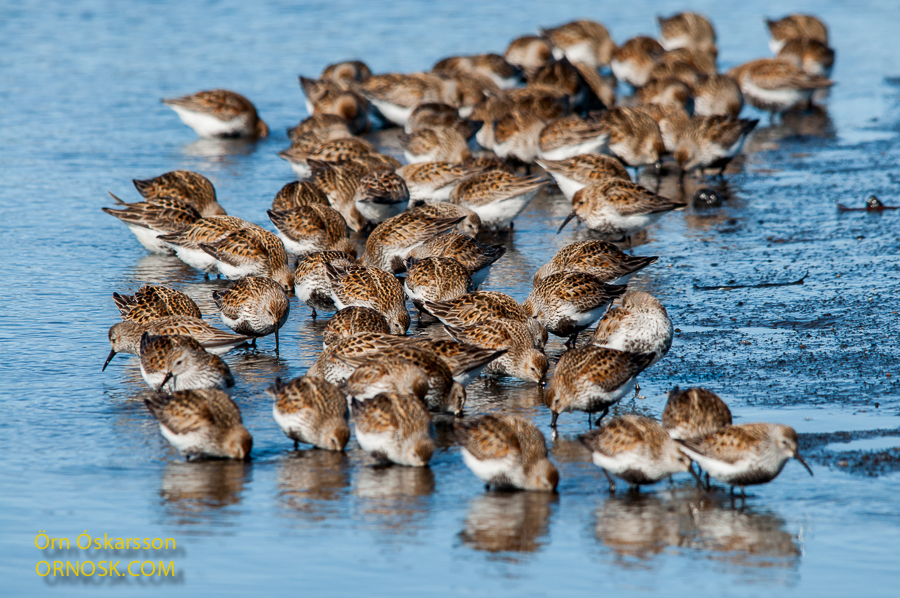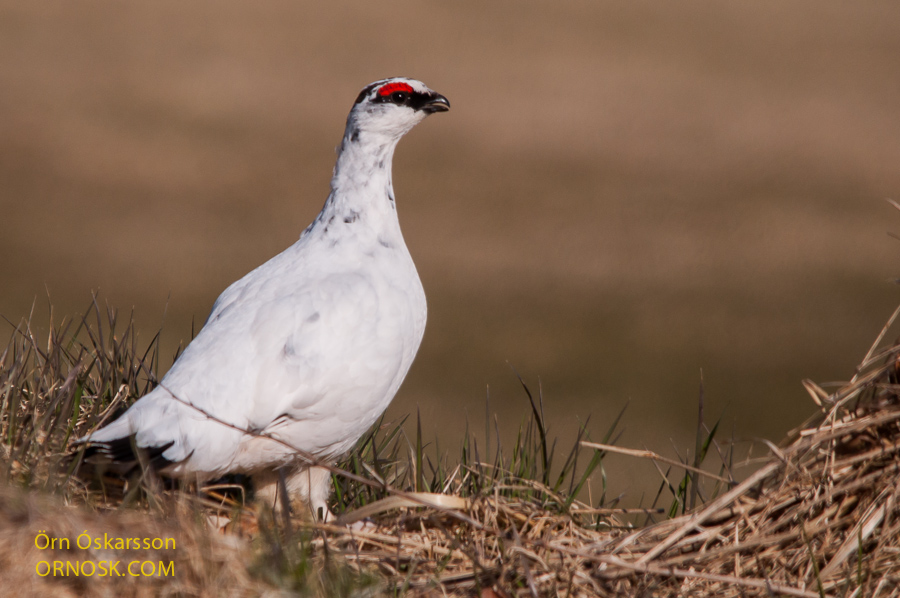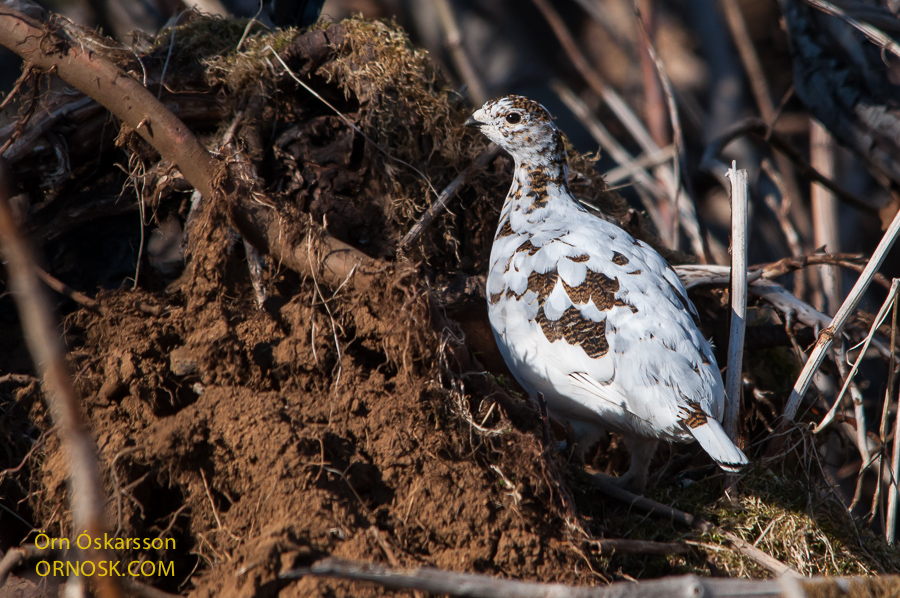In the last few days the wind has been blowing from the Southeast and flocks of Barn Swallows (Hirundo rustica) have been seen around the Southwest part of the country. Today there were 12 Barn Swallows soaring over River Ölfusá by Selfoss and there were around 23 on the beach by Stokkseyri, South Iceland. Flocks have been seen in several places. These are the biggest groups of Barn Swallows to be seen in many years. They are annual vagrants in Iceland and have bred here a few times. If numbers are anything to go by it is very likely that they will breed here this summer.
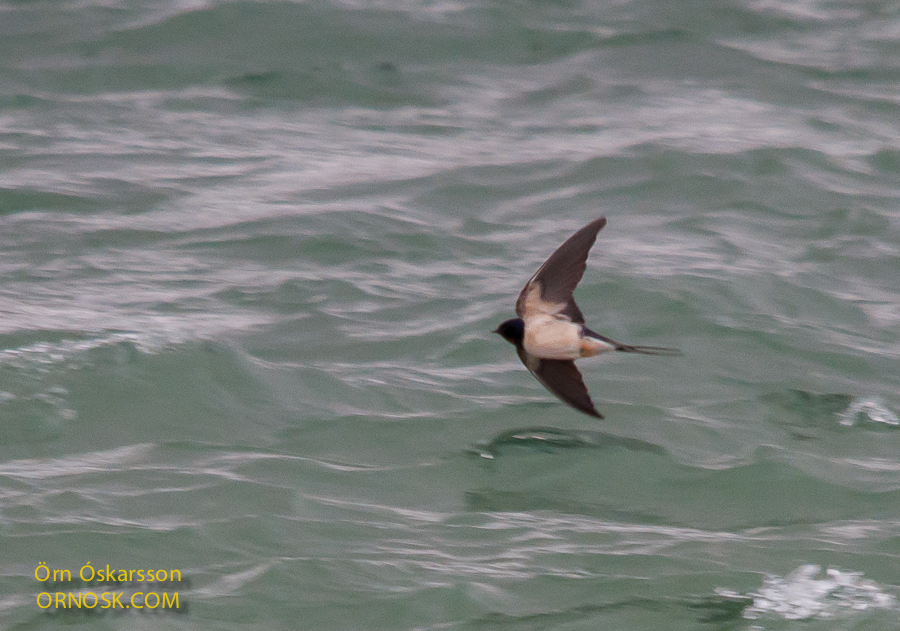
This photo is taken today by Ölfusá River.
This swallow was at the beach in Stokkseyri, South Iceland.

